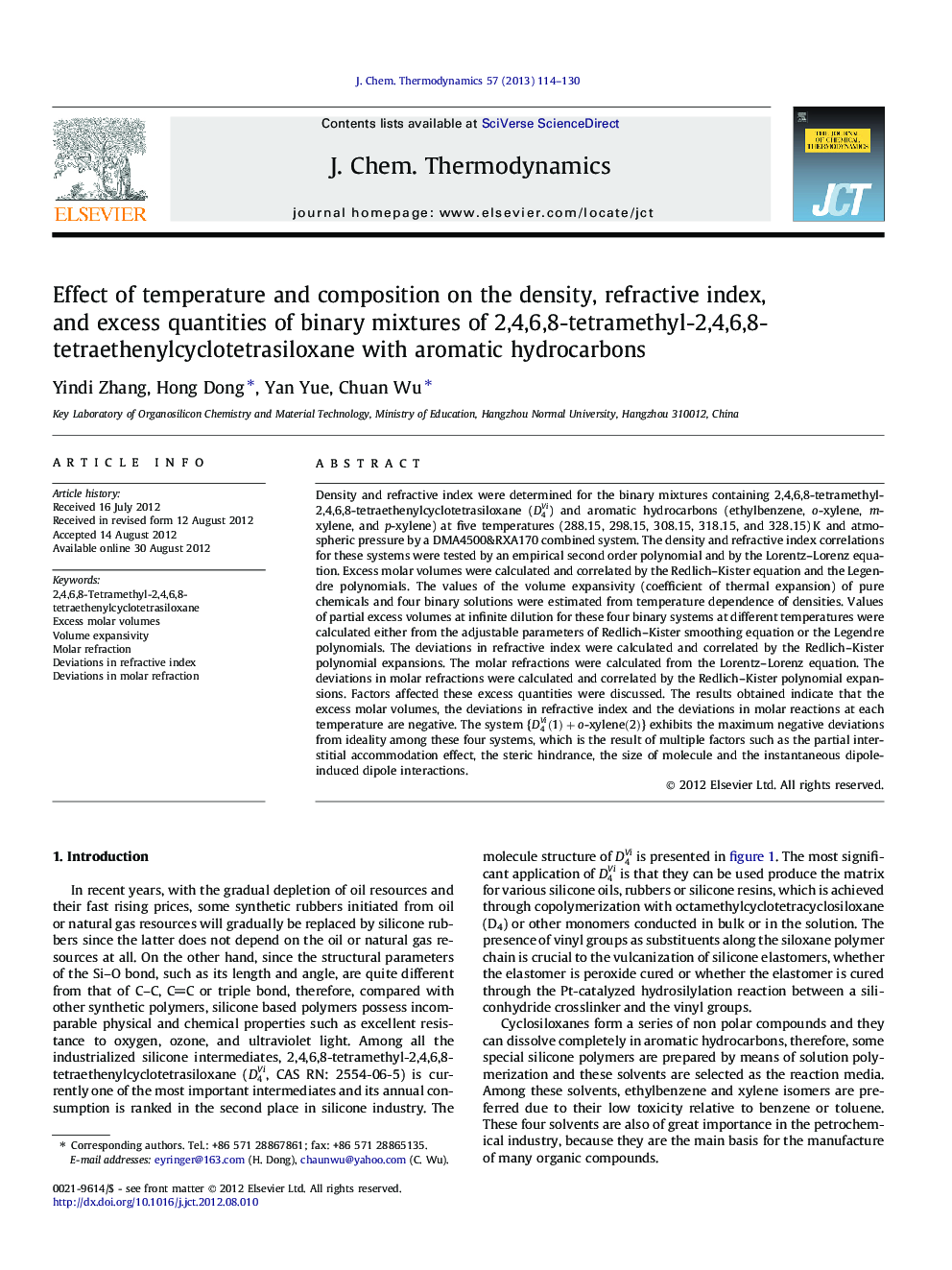| Article ID | Journal | Published Year | Pages | File Type |
|---|---|---|---|---|
| 215743 | The Journal of Chemical Thermodynamics | 2013 | 17 Pages |
Density and refractive index were determined for the binary mixtures containing 2,4,6,8-tetramethyl-2,4,6,8-tetraethenylcyclotetrasiloxane (D4Vi) and aromatic hydrocarbons (ethylbenzene, o-xylene, m-xylene, and p-xylene) at five temperatures (288.15, 298.15, 308.15, 318.15, and 328.15) K and atmospheric pressure by a DMA4500&RXA170 combined system. The density and refractive index correlations for these systems were tested by an empirical second order polynomial and by the Lorentz–Lorenz equation. Excess molar volumes were calculated and correlated by the Redlich–Kister equation and the Legendre polynomials. The values of the volume expansivity (coefficient of thermal expansion) of pure chemicals and four binary solutions were estimated from temperature dependence of densities. Values of partial excess volumes at infinite dilution for these four binary systems at different temperatures were calculated either from the adjustable parameters of Redlich–Kister smoothing equation or the Legendre polynomials. The deviations in refractive index were calculated and correlated by the Redlich–Kister polynomial expansions. The molar refractions were calculated from the Lorentz–Lorenz equation. The deviations in molar refractions were calculated and correlated by the Redlich–Kister polynomial expansions. Factors affected these excess quantities were discussed. The results obtained indicate that the excess molar volumes, the deviations in refractive index and the deviations in molar reactions at each temperature are negative. The system {D4Vi(1)+o-xylene(2)} exhibits the maximum negative deviations from ideality among these four systems, which is the result of multiple factors such as the partial interstitial accommodation effect, the steric hindrance, the size of molecule and the instantaneous dipole-induced dipole interactions.
► Values of ρ and nD of binary mixtures at different temperatures were measured. ► Volume expansivity of pure components and four mixtures were calculated. ► Excess quantities were correlated well with the Legendre polynomials and R–K equation. ► All the excess quantities were negative in the whole composition range. ► Binary mixtures of D4Vi and o-xylene exhibited the maximum deviations in excess quantities.
